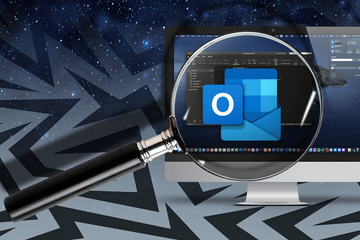If you are getting a “No Results” error when trying to search for emails in the Outlook Mac app, these workarounds should address the problem.
Outlook is an incredibly handy one-stop tool to manage email messages, and yes, it has a dedicated app for Apple laptops and desktop machines. It allows users to combine all email accounts in a single place and benefit from real-time syncing. Furthermore, its time management features make it a yet greater lure for Mac fans. With all these things on the plus side of the solution, a series of bugs can throw a spanner in the works. One of the most common issues manifests itself through unsuccessful attempts to search the Mac edition of Outlook for messages using the built-in search module. Even if you know for sure a specific email is there, the app may return a frustrating “No Results” message. An alternative method to find messages via the macOS Spotlight tool may end up futile, too.
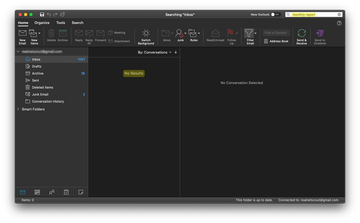
In some cases, updating Outlook to its latest version does the trick. This is an easy technique definitely worth giving a go. But what if the problem persists regardless? To figure it out, let’s dive into what could have caused it, in the first place. Here is a rundown of the most likely catalysts for the drag:
- Special characters in the profile name. If your Outlook profile name contains special characters such as an ampersand (&), a forward slash (/), a backslash (), an asterisk (*), an exclamation mark (!), a hyphen (-), or others from an allowed range, Outlook search may not function as intended.
- Wrong location of the Outlook profile folder. If you are using Microsoft Outlook 2016 for Mac or newer (which is the most plausible scenario), the valid path of the folder named “Outlook 15 Profiles” that stores profile information is as follows: ~/Library/Group Containers/UBF8T346G9.Office/Outlook. If it’s different, you may run into hurdles looking for personal correspondence in mail folders.
- Outlook profile is listed in Spotlight’s Privacy tab. If so, the Mac’s Spotlight feature is blocked from searching that location.
- Spotlight indexing stopped halfway. It’s hard to say why exactly this adverse situation might occur, but it makes some emails slip under the radar when you run a search. One of the possible reasons is that Spotlight hasn’t yet indexed your data if you have recently added a new profile to Outlook for Mac. In the unlikely event the Spotlight index is corrupted, you may have to go the extra mile getting the feature to re-index messages.
The root cause for this predicament varies, and therefore the fix is usually a matter of trial and error. If you can manually find a specific message in your mail folders but Outlook keeps displaying the obnoxious “No Results” error when you use its Search box to look for stuff, the following tips will point you in the right direction.
How to fix Outlook search problem on Mac
This section will shine the light on the best-practice techniques to make Outlook for Mac work the way it should.
Method 1. Ascertain that your Outlook profile isn’t listed under Spotlight’s Privacy tab
- Click the System Preferences icon in your Dock and select Spotlight.

- Click the Privacy tab and make sure your Outlook profile folder isn’t listed there. If it is, Spotlight won’t index it. Select this folder and click the “minus” sign at the bottom to delete it.

Method 2. Make sure your Outlook profile name contains no special characters
- Click the Finder icon in your Dock and select Applications in the sidebar. Find Microsoft Outlook, right-click it, and select Show Package Contents as illustrated below.
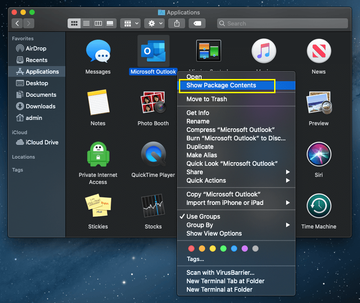
- Go to Contents > SharedSupport and select Outlook Profile Manager.
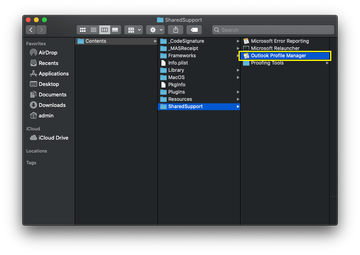
- Check your profile name for special characters. If there are none, skip to Method 3 below. Otherwise, use the following steps to rename the profile.
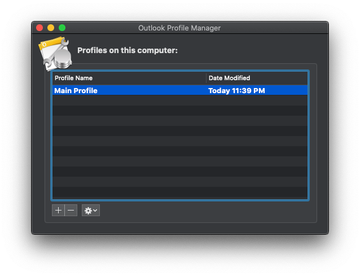
- Expand the Go menu in the Finder area and select Go to Folder. Type the following path and hit Enter: ~/Library/Group Containers/UBF8T346G9.Office/Outlook.
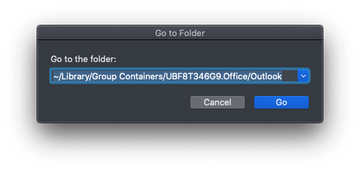
- Double-click the Outlook 15 Profiles folder to open it.

- Rename the Outlook for Mac profile folder so that it doesn’t contain any special characters.

- Go back to Contents > SharedSupport > Outlook Profile Manager and verify that the profile name has been changed.
Method 3. Check the Outlook app for updates
- If you have installed Outlook from Apple’s official software marketplace, the easy way is to click the App Store icon in the Dock and select Updates in the sidebar. If it says no Outlook updates are available, you are good to go. If an update is listed, apply it without a second thought.
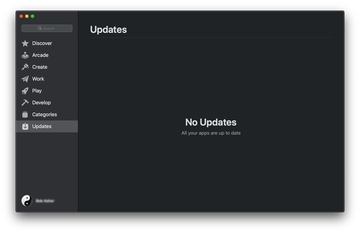
- You can use the Microsoft AutoUpdate tool to check for new build releases and automate the update process. Open Spotlight Search, type “Microsoft AutoUpdate”, and press Enter once the utility appears in the list.
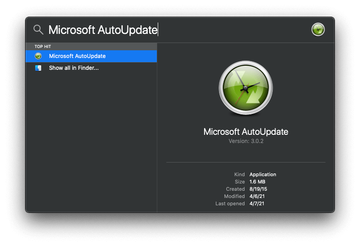
- Click the Check for Updates button. If a pop-up says there are not updates available, proceed to next step. Also, make sure the radio button next to “Automatically” is ticked. On a side note, Microsoft should include macOS dark mode support for this tool – that’s currently missing.

Method 4. Delete and re-add your Microsoft Outlook profile as a last resort
- Expand the Outlook menu in the Finder bar and select Preferences.

- When on the Outlook Preferences screen, select Accounts.
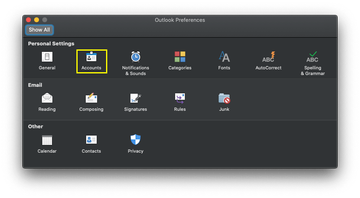
- Select the account you are having issues with, click the “minus” sign at the bottom left of the screen, and confirm the removal.
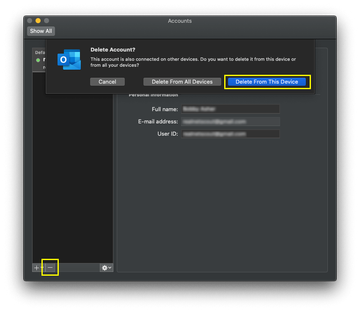
- Once again, go to Contents > SharedSupport > Outlook Profile Manager, select your current profile, and click the “minus” symbol to delete it from there.
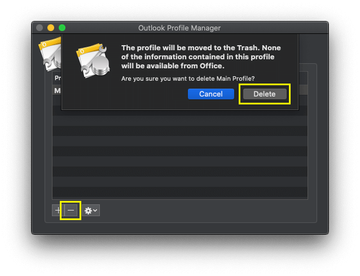
- Once the profile has been removed, click the “plus” sign to add a new one. Name it differently than the old profile and make sure it doesn’t contain any special characters.
- Open the Outlook app, go to Preferences > Accounts, click the “plus” sign, select “New Account”, enter your email address, and follow on-screen prompts to re-create your Outlook profile from scratch.
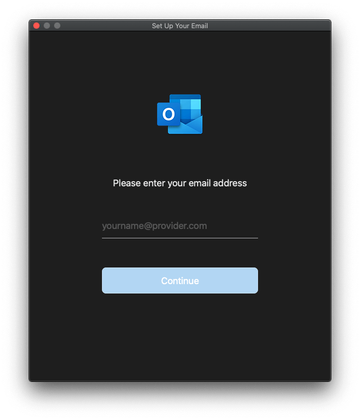
Final thoughts
Outlook for Mac is an awesome and very flexible app overall. But, it has its downsides. When Outlook’s built-in search feature doesn’t work right, user experience takes a major hit. This is a fairly massive problem affecting numerous customers. If you are in the same boat, be sure to try the methods above.
